Radiotherapy - Neolife Bucharest IMRT - IGRT - V-MAT (Rapid-Arc)
Neolife Medical Center in Bucharest is equipped with the most modern and performant linear accelerator - TrueBeam - with the help of which radiotherapy treatments are carried out at the highest standards and in compliance with the newest international protocols.
Manufactured by Varian Medical Systems in the United States, TrueBeam is currently the most advanced equipment available used in radiotherapy treatments in major medical centers worldwide and has been available in Romania as of 2014, being the only one of its kind in South-Eastern Europe.
Ever since the inauguration of Neolife Medical Center in Bucharest, in 2014, stereotactic surgery treatments have been performed for the first time in Romania, for treating patients diagnosed with: carcinoma, melanoma, meningioma, glioblastoma, cavernoma, etc.
Radiotherapy and radiosurgery treatments performed at Neolife Medical Center in Bucharest have minimum side effects on organs and healthy tissues around the tumour, and no major influence on the quality of patients life.
Types of Raditherapy treatments
Why is Radiotherapy administered ?
Radiotherapy can be used for the following purposes:
Curative
Many types of cancer can be cured by radiotherapy or radiotherapy combined with surgery and/or chemotherapy; when used before other treatments, it aims to reduce the size of the tumour, and when it is used after other therapies, the purpose is to stop the growth of residual tumour cells.
Curative radiotherapy can be:
Definitive radiotherapy, as the only method of treatment, is used, for example, in certain stages of the Hodgkin disease, in some non-Hodgkin lymphomas, cancers of the central nervous system, and certain types of cutaneous cancers, certain carcinomas of the head and neck, initial stages of prostate carcinoma, gynaecological tumours.
Palliative
Alleviation of symptoms; sometimes, the cure of cancer is not possible, but the alleviation of symptoms makes the patient's life more comfortable.
Palliative radiotherapy treats specific problems caused by cancer, such as pain or bleeding. The reduction of tumour size implicitly leads to the decrease of pressure exerted by the tumour on the neighbouring organs (for example, brain or bone marrow).
How is Radiotherapy administered ?
Radiotherapy can be administered from the outside of the body (external) or from the inside (internal, brachytherapy/interstitial therapy); the patient can receive a single type of radiotherapy, or a combination of both types.
How does Radiotherapy work ?
Radiotherapy is targeted on the area with the malignant tumour. Radiations affect all tissues in the treatment area, but the maximum effect is exerted on the cells that divide rapidly and actively, such as tumour cells.
If the radiation beam also damages healthy cells, the patient experiences side effects depending on the radiosensitivity of the tissue; for example, tegument cells are more radiosensitive than hepatic cells, therefore they are more likely to suffer damage caused by radiotherapy. The patient does not experience any discomfort during radiotherapy.
How do we know whether the treatment is efficient?
The patient will undergo medical tests and examination throughout the treatment. These tests help the doctor determine whether radiotherapy is efficient. The effects of the treatment are not always immediate - several weeks may be needed after completion of treatment for the assessment of the effect of radiotherapy.
What professionals are in the treatment team ?
The treatment team includes:
View TrueBeam infoNeolife Bucharest - Radiotherapy Medical Team
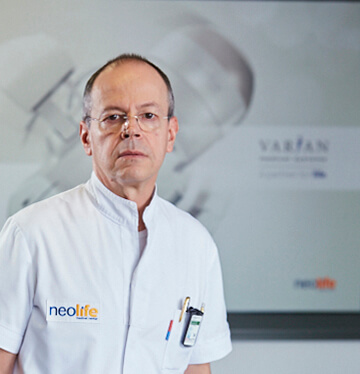 Dr. Stoleru Liviu Sorin
Dr. Stoleru Liviu Sorin
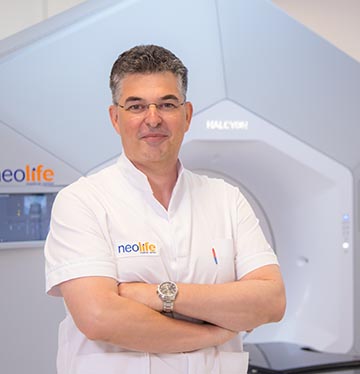 Dr. Vlad Stefanel
Dr. Vlad Stefanel
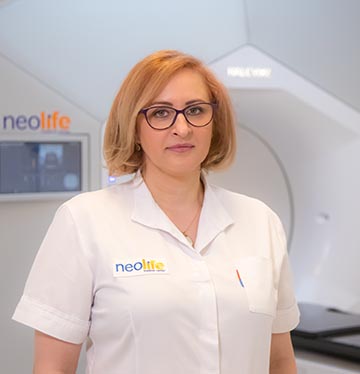 Dr. Bancila Ana Teodora
Dr. Bancila Ana Teodora
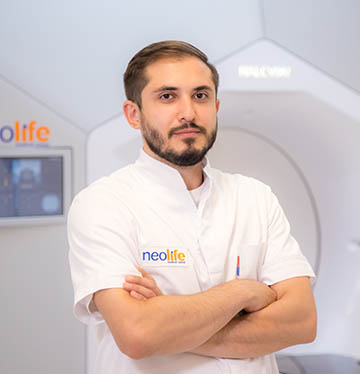 Dr. Radu Bogdan
Dr. Radu Bogdan
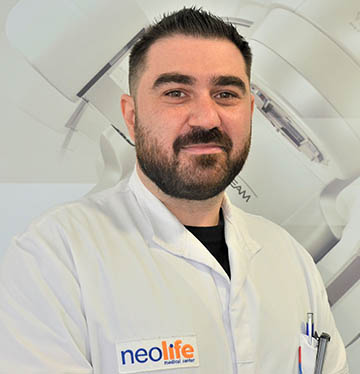 Dr. Buta Tiberiu
Dr. Buta Tiberiu
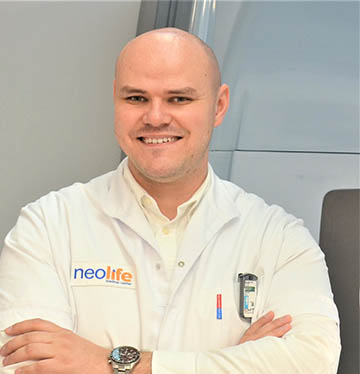 Dr. Sinkovicz Paul
Dr. Sinkovicz Paul
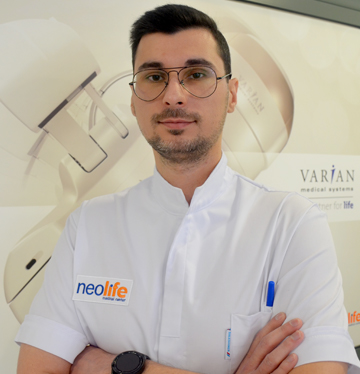 Dr. Chivu Bogdan
Dr. Chivu Bogdan
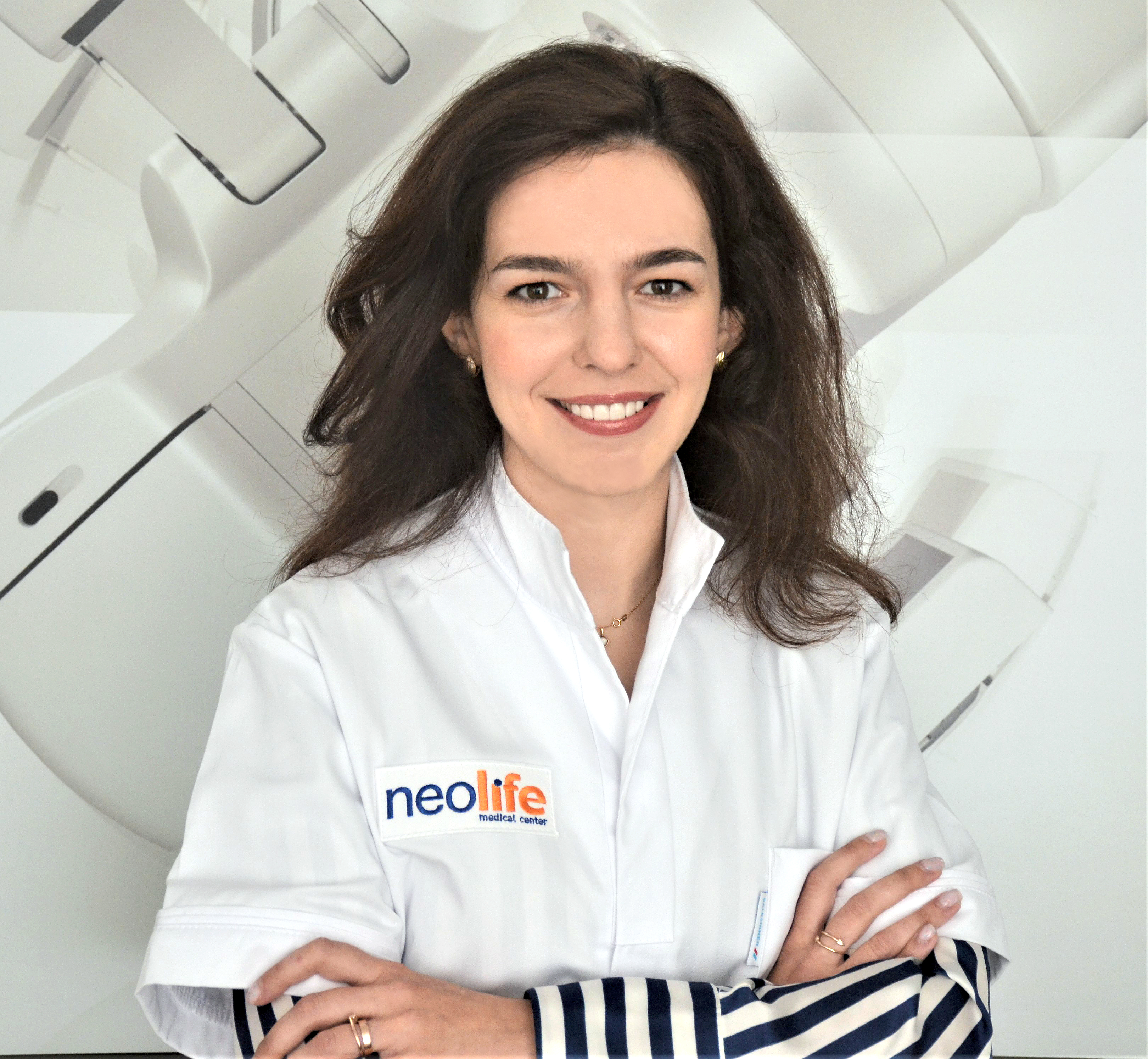 Dr. Pop Casandra Cristina
Dr. Pop Casandra Cristina
